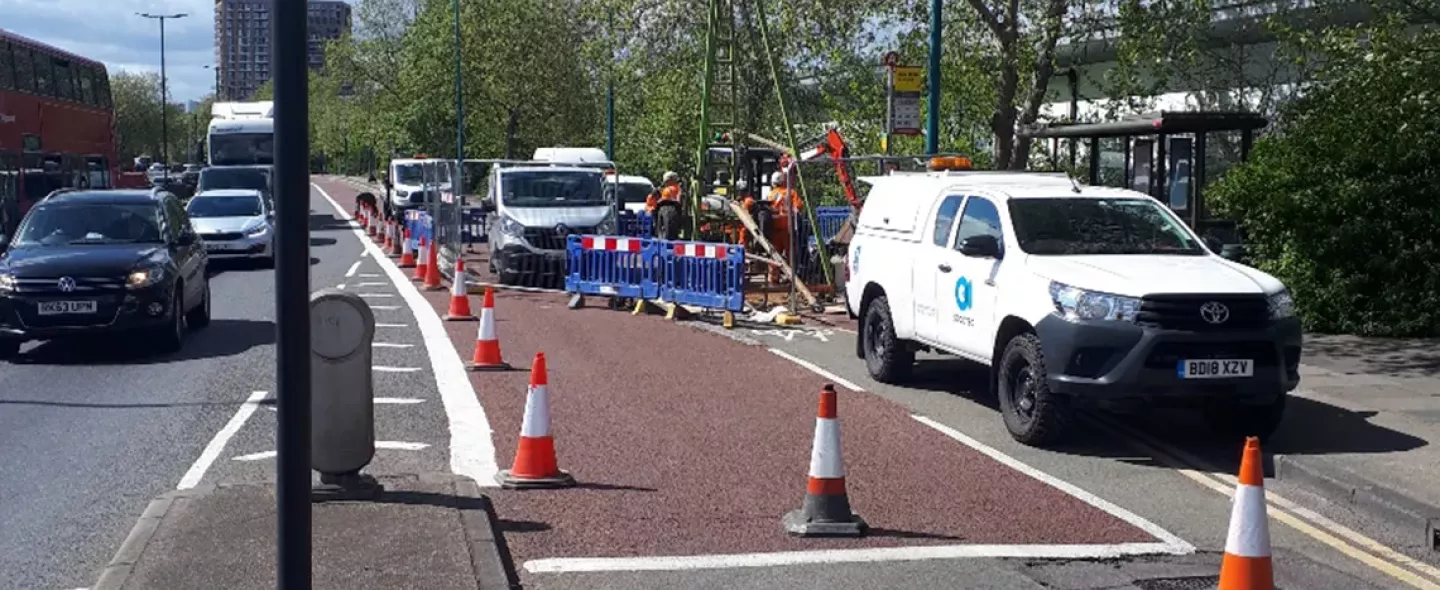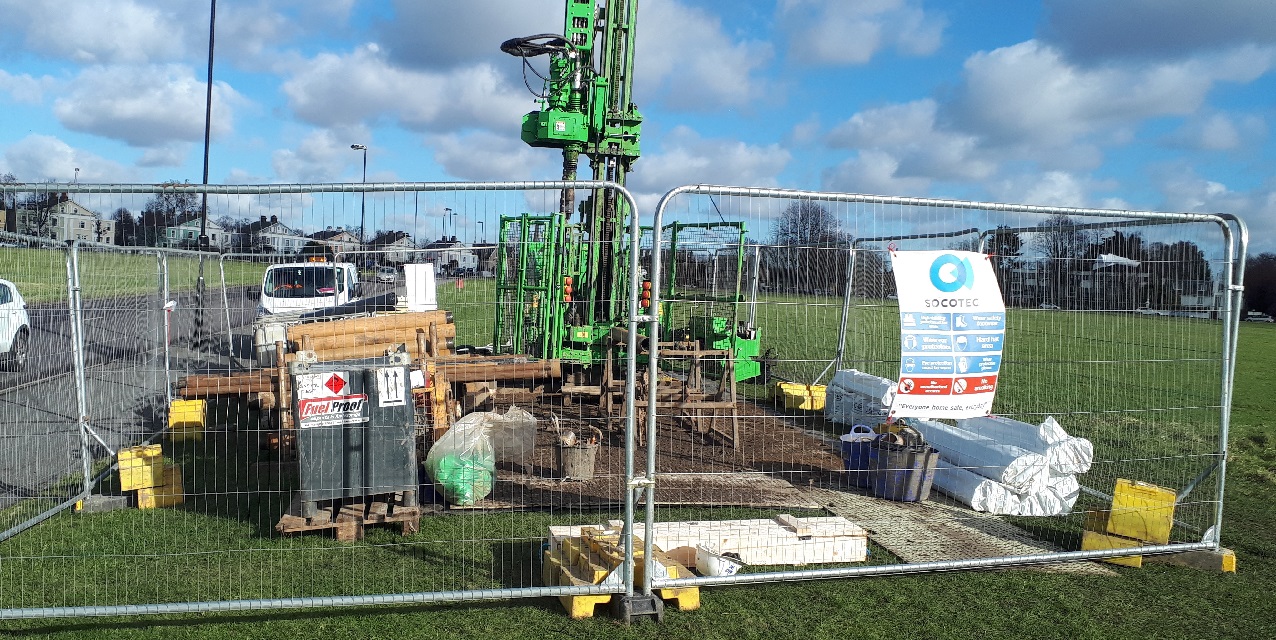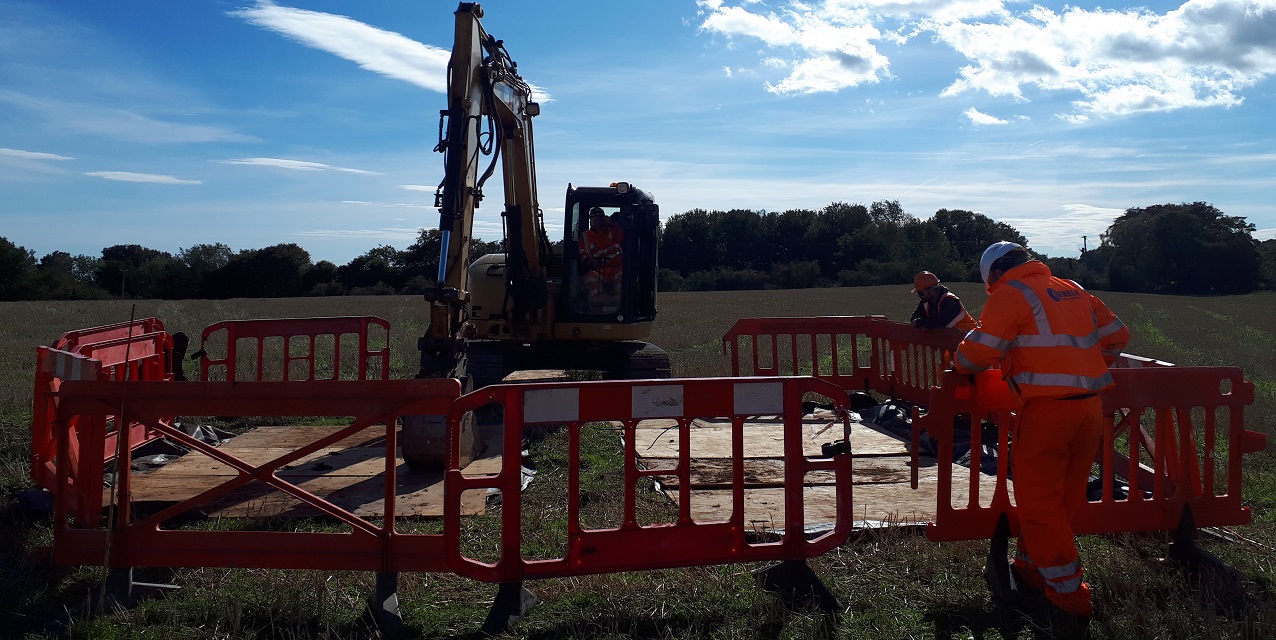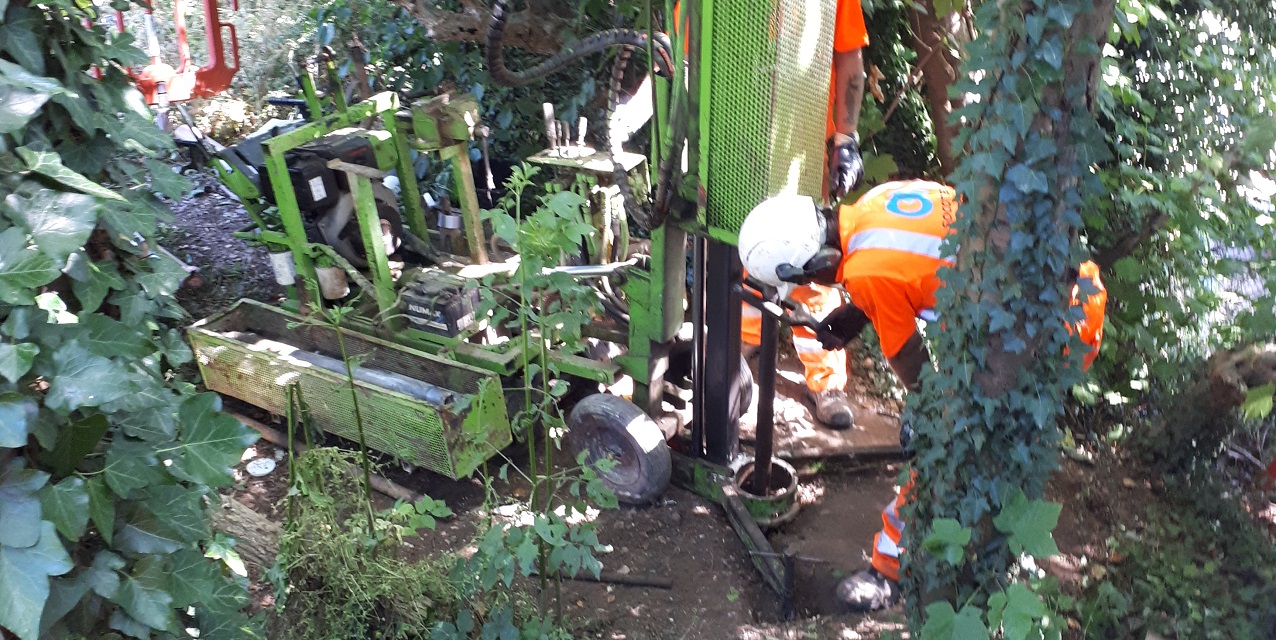During 2018, SOCOTEC carried out a number of ground investigations for road improvement schemes across the UK.
Summary of Works
Client – Osborne Ltd
Project Details - M25 & A23
At junction 8 of the M25, as well as the A23 in Hooley, SOCOTEC has delivered ground investigation and geotechnical services to aid the improvements to a key motorway and trunk route. In the north, SOCOTEC has supported the Trans Pennine Upgrade Programme (TPUP) – the largest framework Highways England has ever awarded – as well as supporting plans to provide additional road capacity at various locations along the A1 in Northumberland.
Although the individual projects had differing technical requirements, each site and project was approached with consistency to deliver accurate information in a timely manner without compromising the core principles of health, safety, environment and quality.

Case Study
GI in the south
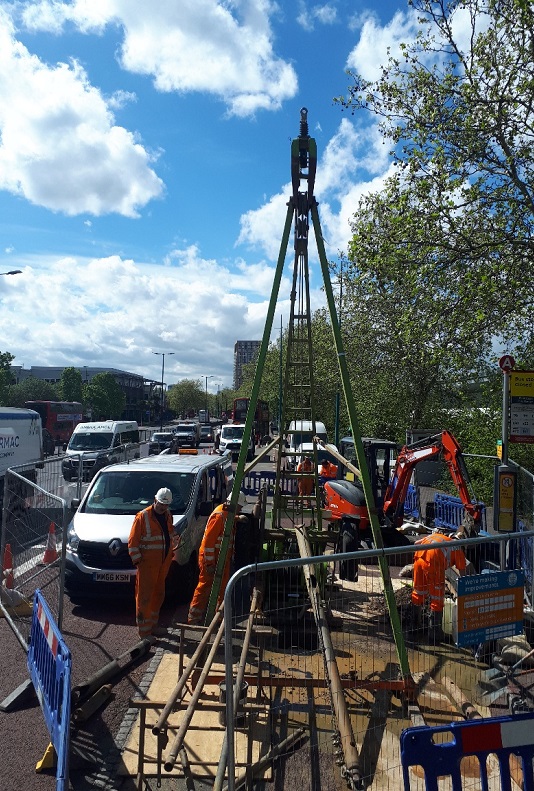
For a proposed widening of the northbound section of the A23 road between the M25 and Hooley, SOCOTEC carried out investigations in two areas, along a sloping embankment and surrounded by dense vegetation. In accordance with BS 5930 (2015), BS EN 1997-2 (2007) and BS EN ISO 22475-1 (2006), a range of in-house drilling rigs were used to meet the requirements of the project specification. Exploratory holes were created using a hand held window sampler as a dynamic windowless sampler to ascertain the ground properties up to depths of 9 metres.
The ground investigation at Junction 8 of the M25 comprised rotary drilled boreholes, dynamic (windowless) sampler holes, hand dug trial pits, pavement cores, in situ testing and laboratory testing. The locations of the holes changed during the fieldworks, due to detected services underground (using a cable avoidance tool) as well as hard obstructions encountered at the base of the inspection pit.
For a proposed widening of the northbound section of the A23 road between the M25 and Hooley, SOCOTEC carried out investigations in two areas, along a sloping embankment and surrounded by dense vegetation. In accordance with BS 5930 (2015), BS EN 1997-2 (2007) and BS EN ISO 22475-1 (2006), a range of in-house drilling rigs were used to meet the requirements of the project specification. Exploratory holes were created using a hand held window sampler as a dynamic windowless sampler to ascertain the ground properties up to depths of 9 metres.
The ground investigation at Junction 8 of the M25 comprised rotary drilled boreholes, dynamic (windowless) sampler holes, hand dug trial pits, pavement cores, in situ testing and laboratory testing. The locations of the holes changed during the fieldworks, due to detected services underground (using a cable avoidance tool) as well as hard obstructions encountered at the base of the inspection pit.
GI in the north
To support the Trans Pennine Upgrade Programme, SOCOTEC carried out cable percussion and rotary drilling, in situ testing and laboratory testing. SOCOTEC also conducted a pumping test to gain information on the permeability of the bedrock. The site was within the village of Mottram and surrounding farm land, so careful consideration had to be given to a range of factors to minimise disturbance and inconvenience to the adjacent properties. With the majority of the site located on Glacial Till overlying heavily faulted bedrock of the Millstone Grit Series, drilling techniques included Geobor ‘S’ wireline drilling to obtain good recovery in the tricky ground conditions.
Further north, along the A1 in Northumberland, a ground investigation was carried out across a proposed realignment route – which was split into four areas of work, each with specific requirements.
The route from Alnwick to Ellingham required geotechnical and geoenvironmental information to support the proposed dualling of a section of the route. In addition to cable percussion and rotary follow-on boreholes, SOCOTEC used in situ soakaway testing to determine soil infiltration rates.
Where National Grid is required to divert an existing high pressure gas pipeline, between Morpeth and Felton, a number of exploratory holes were drilled using cable percussion rigs, dynamic sampling rigs and machine-dug trial pits.
Along the same route, the location and identification of existing buried service was essential with six hand-dug trial pits to depths of 1.2 metres whereas, at Causey Park, the ground investigation aimed to identify any mining related features such as voids, broken ground or coal seams. With challenging access routes due to uneven ground conditions, SOCOTEC was able to utilise their extensive in-house drill fleet by deploying a track-mounted rotary drill rig to minimise disturbance.
Geotechnical properties
In addition to SOCOTEC’s fleet of in-house drilling plant, equipment and experienced engineers, all of the Highways projects were able to benefit from using SOCOTEC’s in-house geotechnical laboratory capability for a streamlined and quality-controlled approach to sample analysis.
In accordance with standards specified in the contract, fieldwork geotechnical samples were most commonly tested to determine water content and Atterberg limits, both of which provided critical information into the engineering properties, consistency and behaviour of the soil. In line with the project specification, further tests were carried out to determine the pH, acidity, water soluble sulphate content and total sulphur content.
The laboratory testing provided crucial insight into the ground conditions, and enabled the design team to make suitable and appropriate decisions based upon this information.
Pavement investigations
Understanding the integrity of the road infrastructure is critical to roadwork constructions. For Junction 8 works, pavement investigations provided information on the condition of the underlying made ground, enabling strategic and informed decisions to be made.
Using diamond core drilling, unbound material sampling (UMS), falling weight deflectometer (FWD) testing and ground penetrating radar (GPR), SOCOTEC was able to provide Osborne with descriptions of the materials encountered and details of the samples taken, together with observations made during the work.
The pavement core samples were tested at SOCOTEC’s Weymouth laboratory, with tests including; PAK marker screening for polycyclic aromatic hydrocarbons (PAHs), bulk density, maximum density and air voids content in addition to indirect tensile stiffness modulus testing.

Case Study
Using Ground Penetration Radar
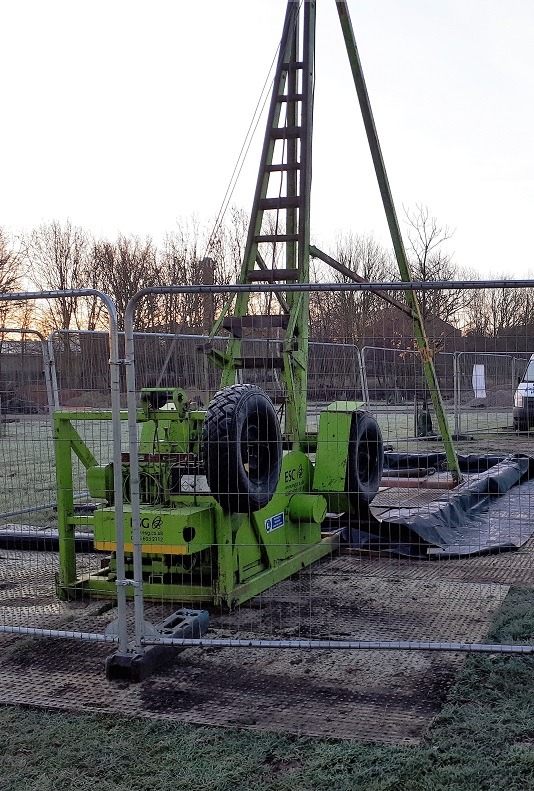
GPR surveys were undertaken to assess the pavement condition in relation to layer thickness, changes in construction and subsurface anomalies, in conjunction with the core samples obtained at areas where anticipated construction changes were spotted.
Using quality control/quality assurance (QA/QC) procedures, including system warm up and wheel calibration, the data was collected by maintaining a lateral position throughout the length of each GPR profile line. Roads were not closed for the surveying, but SOCOTEC took extreme care and used yellow strobes and work lights as part of the safety precautions.
With a continuous stream available to view on the monitor in real time, good quality data was being captured which was immediately backed up for post processing once surveying was completed.
Of the 29 core samples taken for the entire site, five samples were used to validate the GPR result as they showed changes in construction and anomalous discontinuities – which might represent regions of possible structural degradation.
GPR surveys were undertaken to assess the pavement condition in relation to layer thickness, changes in construction and subsurface anomalies, in conjunction with the core samples obtained at areas where anticipated construction changes were spotted.
Using quality control/quality assurance (QA/QC) procedures, including system warm up and wheel calibration, the data was collected by maintaining a lateral position throughout the length of each GPR profile line. Roads were not closed for the surveying, but SOCOTEC took extreme care and used yellow strobes and work lights as part of the safety precautions.
With a continuous stream available to view on the monitor in real time, good quality data was being captured which was immediately backed up for post processing once surveying was completed.
Of the 29 core samples taken for the entire site, five samples were used to validate the GPR result as they showed changes in construction and anomalous discontinuities – which might represent regions of possible structural degradation.
Capability and flexibility
Operating to a strict time schedule, SOCOTEC adapted its work programme to meet the needs of the client across all projects. Flexibility with day and night working shifts, in addition to a multi-service approach, meant that a number of critical success factors could be delivered to meet the client-specified schedule.
A continuing journey; a long road to completion
Having successfully completed four projects for road improvements in 2018, SOCOTEC is delighted to be continuing works in the summer of 2019 to support redevelopment at junction 10 of the M25. SOCOTEC will carry out ground investigations on the verge or upon slopes situated adjacent to the existing highway carriageway, slip roads, interchange, with slope climbing rigs required. To ascertain the ground conditions beneath the proposed development, SOCOTEC will provide geotechnical parameters and contamination data to aid outline design. Locating existing underground services and determining potential ground contamination concentrations through laboratory testing will also fall under the scope of works. Reporting in AGS format will also benefit the project with complete digital transfer of laboratory scheduling data.
Further improvements to junction 25 and junction 28 of the M25 will follow, to ease congestion and delays by widening the road network in these areas.
Sarah Valentine, operations manager for Ground Investigation, commented: “Our new awarded contracts for 2019 are testament to our high quality service delivery and due diligent approach to our 2018 project completions. Having developed a successful working and collaborative partnership with Atkins and Osborne, we look forward to continuing to support the road improvements with our ground investigation and complementary services where needed.”

